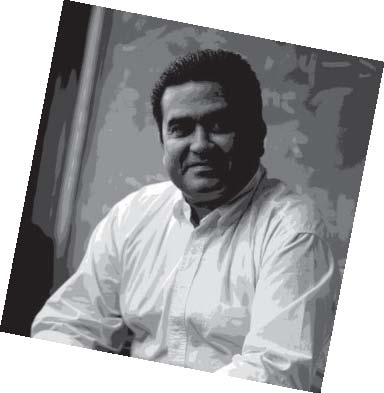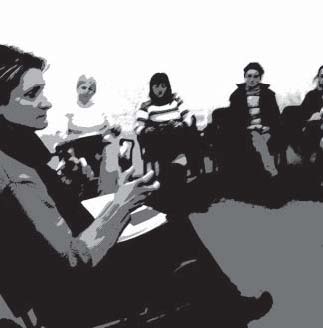Difficult Reunions: Working With Families to Overcome Abuse
Most of the time 14-year-old Donovan [not his real name] would only see his father if he managed to stay up late. Almost every night his father, a single parent, would drink at the casino where he worked, stumble home after midnight, and sleep until late in the afternoon. He would go back to work before Donovan came home from school and do it all over again. Some days his father wouldn’t make it to work. He would take out his frustrations on Donovan, punching him for the slightest offenses.
Brian Nelson, director of Covenant House, a Family and Youth Services Bureau (FYSB) grantee in Atlantic City, New Jersey, comes in contact daily with young people like Donovan who run away and end up living under the boardwalk because their parents abuse or neglect them. Indeed, 68 percent of Covenant House clients report some type of childhood physical abuse.
Nationwide, a quarter or more of youth served by FYSB’s Basic Center and Transitional Living Programs report abuse and neglect at home.
Staff in federally funded youth shelters deal with the real life people behind these statistics daily. Required to reunify youth with their families whenever possible, staff members must determine what circumstances would allow for a child who has been abused to safely return home. Making that call can be one of the hardest decisions a youth worker or social services worker has to make.
According to data from FYSB’s Runaway and Homeless Youth Management Information System, or RHYMIS, youth from abusive households reunify with their families less often than do their peers from nonviolent homes. These young people may be safer in transitional living programs or may be candidates for emancipation.
Still, studies in social work show that youth who return to their families are better off than those who leave shelters for other living arrangements. For instance, they do better in school, both academically and socially.
Unveiling the Truth
Whether or not a child can return home varies depending on the family dynamics. While some parents may simply require intensive counseling, parenting classes, or help with finding employment, others may have more entrenched problems. There may be prostitution in the home or emotional, sexual, or extreme physical abuse.
Before youth workers can decide whether the young person should be reunited with his or her family, they have to determine whether the young person has been abused.
 When the physical evidence of abuse is obvious, most States require youth workers to call social services within 24 to 48 hours. The young person is not allowed to go home until social services personnel complete their investigation. If the abuse is substantiated, the child is taken into custody of child protective services.
When the physical evidence of abuse is obvious, most States require youth workers to call social services within 24 to 48 hours. The young person is not allowed to go home until social services personnel complete their investigation. If the abuse is substantiated, the child is taken into custody of child protective services.
Youth workers at several FYSB grantees say that when abuse isn’t evident, an outreach team from the basic center and a social worker will often visit the young person’s home to see if it’s possible to return the child home. Red flags include drugs or other illegal activities.
 Then the young person receives a comprehensive assessment that may include a suicide assessment, and counselors talk to the youth to determine if a mediation session with the parents is feasible. Youth workers often need time to build a rapport with the young person.
Then the young person receives a comprehensive assessment that may include a suicide assessment, and counselors talk to the youth to determine if a mediation session with the parents is feasible. Youth workers often need time to build a rapport with the young person.
“When we have kids come in, violence in the home is not the first thing they want to talk about,” Nelson says. “They are homeless. They haven’t eaten. They haven’t taken a shower. Maybe a week or two later they may want to talk about what happens in the home.”
Nelson says if evidence of abuse arises with young people 18 or older, he and his Covenant House colleagues let youth determine if their parents will be called. He says that it is usually not safe for parents from a violent household to come in for a mediation session with the child.
“But it’s really a case by case kind of thing,” he says.
Counseling with Caution
 In less extreme cases of neglect, or if single parents who are overburdened are simply lashing out at children, counseling may be possible, if the abused youth is willing. If parents show a sincere interest in seeking treatment, youth workers set up a mediation session with the child and the parents. A social worker will lead the counseling sessions to see what areas have contributed to violence in the home and discuss where parents can seek additional support.
In less extreme cases of neglect, or if single parents who are overburdened are simply lashing out at children, counseling may be possible, if the abused youth is willing. If parents show a sincere interest in seeking treatment, youth workers set up a mediation session with the child and the parents. A social worker will lead the counseling sessions to see what areas have contributed to violence in the home and discuss where parents can seek additional support.
“The chance of abuse is lessened each time parents are offered some support,” says Nelson.
But there are risks involved in inviting a suspected abuser to counseling sessions.
“It’s always good to err on the side of caution and always believe the victim, because it could potentially be a deadly situation,” says Pat Ferraioli, the director of education for the New York State Coalition Against Domestic Violence. “People who are abusers are very skilled at having a rational, calm face.”
“Even if they acknowledge that the behavior is inappropriate, many abusers feel they are entitled to do what they are doing,” she adds.
Because of the potential for physical danger to both the young person and the youth worker, basic center programs try to get all of the facts from young victims, as well as other members of the household who may have been abused, before reaching out to the abuser.
Getting Families To Open Up
At Sasha Bruce Youthwork, a FYSB grantee in Washington, DC, youth workers use innovative ways to get families to open up about complicated issues at home.
Lachelle Richmond, cocoordinator of Sasha Bruce House, the organization’s basic center, says the most effective tool for supporting youth is having them talk in groups. “That’s when they are the most comfortable with disclosing what’s going on. And they help and support each other.”
 Staff then reach out to the families and try to create a nonthreatening atmosphere where everyone can talk.
Staff then reach out to the families and try to create a nonthreatening atmosphere where everyone can talk.
“We do retreats with our young people and our families, and in those retreats we do address needs—whether it’s domestic violence, dating violence, parenting skills,” says George Johnson, program director of Sasha Bruce. “We go overnight and work with the families in a different environment hopefully to instill in them the tools they need to return home.”
“Many times, especially the mothers want to talk with someone about what’s going on,” says Johnson.
Sasha Bruce offers parent support groups where parents can talk about their frustrations with child rearing, or how they are overwhelmed as a single parent. They can share their experiences with other parents, while a facilitator helps to guide the discussion. They limit the groups to just four families to keep conversations intimate.
Facilitators, in the meantime, can use the sessions to assess whether a child should be returned home.
“If a parent comes to a session and says, ‘I know what’s going on and it’s horrible and I need help,’ that’s one thing,” says Johnson. “If we have a family session where we have parents who become enraged and say, ‘It’s absolutely not true and this kid can rot in hell,’ then they are not going home.”
A Different Way for Families to Interact
Deborah Shore, executive director at Sasha Bruce, says that their approach to counseling is to help families come to a point where their learned dysfunctional behavior changes to something more positive.
“We try to develop a different way for families to interact,” says Shore. “We might have them create opportunities for anyone to call a family meeting when things get hectic. We are trying to get them to express themselves and listen, rather than resorting to physical means to discipline.”
At Sasha Bruce, followup services can also focus exclusively on the young person. If the young person is part of the after school program located at the center, counselors may reach out to the young person there.
At Covenant House in Atlantic City, families may be referred to community-based services like anger management classes, drug rehabilitation, or parenting classes after they complete counseling at the facility. Or they may resume aftercare services with a licensed clinical onsite counselor.
In Donovan’s case, Covenant House reunified him with his father after they underwent extensive individual, group, and family counseling. His father also completed a 6-month rehabilitation program. Covenant House continued weekly counseling sessions with the family after they reunited.
Shore says that they continue to follow up with families at Sasha Bruce for 6 to 8 months after they have completed counseling. Counselors will go into the homes of the families and do two or three family sessions per week to reinforce new behaviors.
“When we design the treatment plan, we present it to the family and the young person and get their input,” says Shore. “Because ultimately, we want them to be able to solve their own problems.”


 Sign up
Sign up Follow us
Follow us Like us
Like us Sign up for our RSS feeds:
Sign up for our RSS feeds: 

